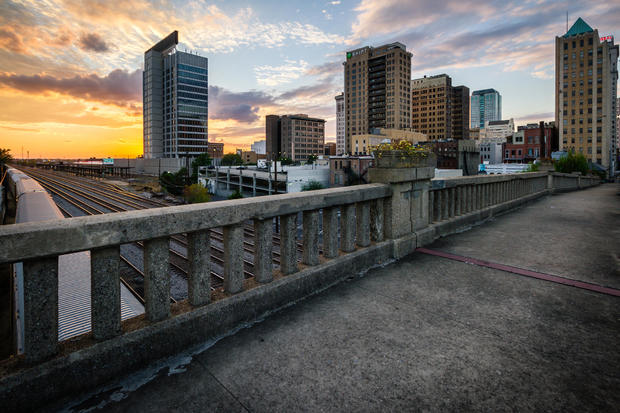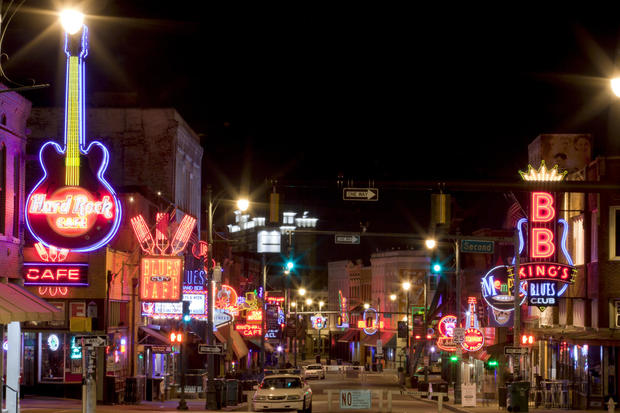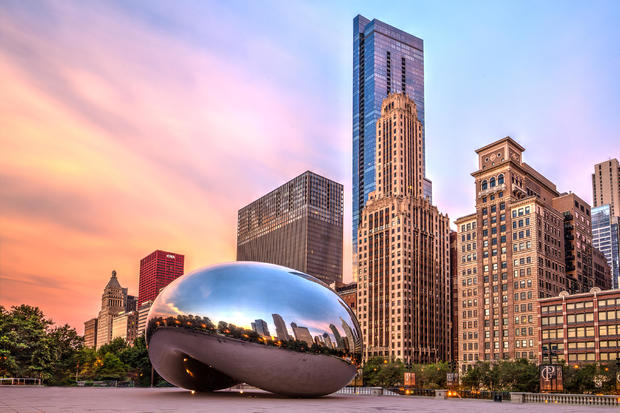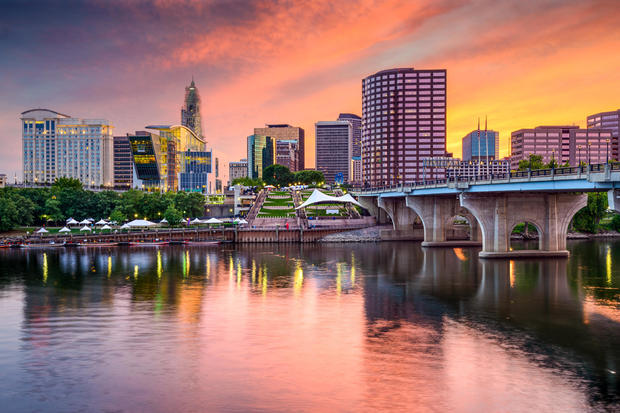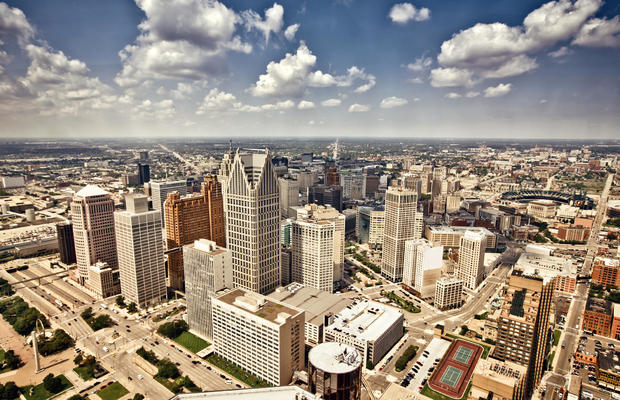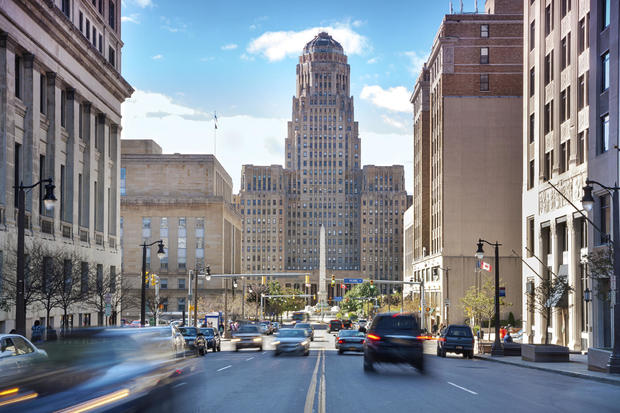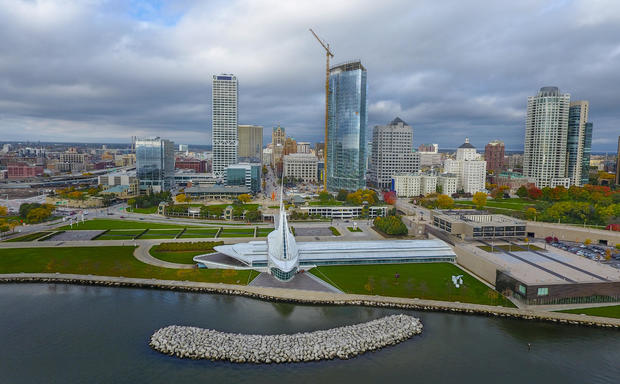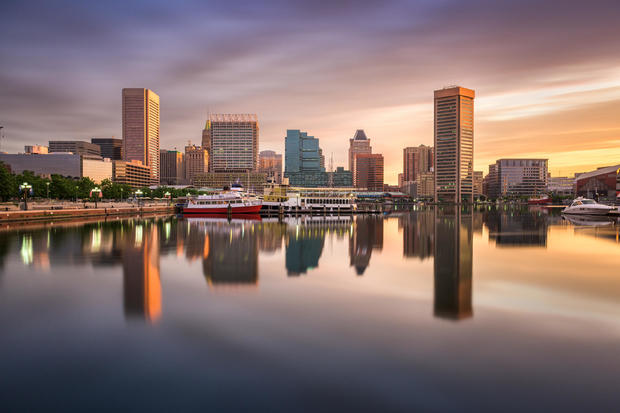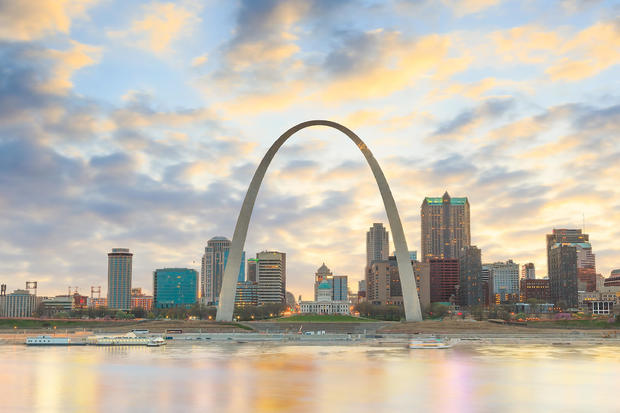12 major American cities that are shrinking
Some American cities have enjoyed a revival during the past two decades, with urban centers like New York City attracting new residents and businesses.
Yet rather than enjoying the success stories of big cities such as San Francisco, a dozen metropolitan areas are suffering population losses, according to recent Census Bureau data tracking the population of the country's 53 biggest major metropolitan areas. Many of these shrinking cities are former industrial powerhouses that have lost their footing amid the decline of America's manufacturing power.
A shrinking population creates a host of headaches, including a smaller tax base and a weaker economic engine. Many Rust Belt cities have been losing residents for decades, which adds to the difficulties in weathering globalization and a shift to service-based industries. Because some federal contributions are based on population size, these cities can suffer a double whammy from smaller appropriations.
Shrinking cities can end up in a negative feedback loop. Since a smaller tax base can lead to higher taxes on the remaining residents, some may grow frustrated and depart for the suburbs or cheaper cities. That then puts more pressure on city leaders to raise taxes on the remaining residents, keeping the cycle going.
That's one of the problems facing Chicago, the biggest city in Illinois, a state that lost more residents than any other last year. Illinois' financial crunch has prompted some observers to suggest it could be the first state to file for bankruptcy protection.
"llinois has the second-highest property taxes in the U.S.," said the conservative-leaning Illinois Policy Institute in a statement. Last week, "Republican state lawmakers and Republican Gov. Bruce Rauner -- who campaigned on the premise of lowering taxes -- proposed raising the state income tax by $5 billion a year, as well as implementing a variety of other tax increases or new taxes that would cost every Illinois household $1,125 a year in higher taxes."
Large sections of the industrial heart of America shifted toward the Republican Party in the 2016 election, a first since Ronald Reagan. Some voters in those regions are pinning their hopes on President Donald Trump's promises to revive manufacturing and job growth.
Erie, Pennsylvania, is too small to be counted among the country's biggest metropolitan areas, but it too has suffered from some similar ailments. Decades of decline in American manufacturing have left this city as a shell of the thriving city it was during the 1950s, prompting one resident to tell CBS News, "Erie is definitely a sinking ship, and you'd be crazy not to get off a ship that's sinking."
On the flip side, 18 cities among the country's 53 major metropolitan areas have growth that's leapfrogging over the suburbs, including New York and San Francisco.
And Americans are increasingly moving to Sunbelt cities. The metropolitan area with the fastest growth from 2015 to 2016 was the Orlando-Kissimmee-Sanford, Florida, region, whose population expanded 2.5 percent to 2.44 million. The data is from the Brookings Institution's analysis of Census data from July 2015 to 2016.
12. Pittsburgh (-0.1 percent)
Pittsburgh may be a rare success story among Rust Belt towns, but the former Steel City isn't immune from population loss -- even as it has transformed from a one-time industrial titan into a city buoyed by technology and health care.
As the home of Carnegie Mellon University and University of Pittsburgh, the city is attracting companies like Google (GOOG) that are eager to hire young graduates. Housing that has remained affordable is another plus, but the city's growth has partly been stymied by high taxes, which may be pushing some residents into the suburbs or to consider other cities.
Pittsburgh's metropolitan area declined 0.1 percent last year to 2.34 million residents. The region had 2.65 million residents in 1980.
11. Birmingham-Hoover, Alabama (-0.2 percent)
The Birmingham-Hoover metropolitan region is one of just two Southern cities that saw population loss last year, declining 0.2 percent to 1.15 million residents.
One reason for the decline could be "fragmentation of government," according to the Alabama Media Group, which publishes The Birmingham News. One researcher told the publication the city has "arguable the most fragmented community in the Southeast because we developed in this fragmented pattern."
Even though the city may be shedding residents, the Southeast region's population grew last year by 0.2 percent, the Census said.
10. Memphis, Tennessee (-0.3 percent)
Memphis is the other Southern city that's losing population. The metropolitan area declined 0.3 percent to 1.3 million residents.
The state's changing dynamics mean Nashville now ranks as the Tennessee's biggest city.
Memphis' population loss is a "cause for concern," according to the Memphis Daily News. A large geographic area, limited public transportation and high poverty levels are among the headwinds facing the city, it added.
9. Chicago-Naperville-Elgin (-0.3 percent)
The population in the Chicago-Naperville-Elgin metropolitan area declined 0.3 percent to 9.5 million people. The city's shrinking population reflects a loss that's hurting the entire state of Illinois, however.
The city's population is likely to keep declining over the next few years, according to The Chicago Tribune. Residents complain about high taxes, the financial stresses on the state, the crime rate and harsh weather.
8. Rochester, New York (-0.4 percent)
A onetime industrial powerhouse, Rochester has suffered a long-term population decline, not unlike other Rust Belt cities. It fell out of the top 100 largest American cities by population in 2014.
Last year, Rochester's metropolitan area declined 0.4 percent to 1.08 million residents.
7. Hartford-West Hartford-East Hartford, Connecticut (-0.5 percent)
The Hartford, Connecticut, region saw its population shrink by 0.5 percent to 1.2 million people last year.
The reason? It's both cultural and economic, according to the National Review. Fiscal problems at the state level aren't helping, while crime and the cost of living are headaches for residents. Hartford was ranked as one of the 50 worst cities in the country by 24/7 Wall St., which examined crime, educational attainment, employment growth and other issues.
6. Cleveland-Elyria, Ohio (-0.5 percent)
The Cleveland metropolitan area lost 0.5 percent of its residents last year, dipping to 2.06 million residents.
One bright spot: The population losses are slowing after steeper declines from 2000 to 2010.
"Cleveland may be about half as big, population-wise, as it was in 1970, but in inflation-adjusted dollars the cost of running the city is about the same," noted former Cleveland Plain Dealer editorial director Brent Larkin in the publication.
5. Detroit-Warren-Dearborn, Michigan (-0.5 percent)
Detroit's metropolitan area has shed 0.5 percent of its population, declining to 4.3 million residents.
Aside from the tough winters that many Rust Belt cities suffer through, Detroit has had its own set of problems to weather. Its bankruptcy made Detroit into a cautionary tale for former manufacturing cities.
The city, whose population peaked in 1950, has emerged from bankruptcy with some signs of new life. Detroit now ranks 30th on the Kauffman Innovation Index, which measures the rate of new entrepreneurs and startups, compared with 35th in 2015. LinkedIn last year cited Detroit as one of the top cities for millennial job seekers.
4. Buffalo-Cheektowaga-Niagara Falls, N.Y. (-0.6 percent)
Buffalo's metropolitan area declined 0.6 percent to 1.13 million residents. The city has a relatively high unemployment rate, while about one out of six people there live in poverty.
Like other Rust Belt cities, the latest numbers reflect the continuation of a decades-long trend. A few bright points are emerging, however, such as a $900 million factory to make solar tiles for Tesla (TSLA) and Panasonic, which is expected to create 500 manufacturing jobs.
3. Milwaukee-Waukesha-West Allis, Wisconsin (-0.7 percent)
The population of the Milwaukee metropolitan region has declined 0.7 percent to 1.6 million residents.
While Milwaukee is losing residents, another Wisconsin city is growing. Madison, home to University of Wisconsin, is attracting new residents. The dynamics may reflect the countrywide shift away from manufacturing bases in favor of cities that focus on services, such as education and health care.
2. Baltimore-Columbia-Towson, Maryland (-1.1 percent)
The Baltimore metropolitan area declined 1.1 percent to 2.8 million. The core city's population shrank to a 100-year low, reversing a push from Mayor Stephanie Rawlings-Blake to attract 10,000 new families to Baltimore.
Some residents are moving amid a rising crime rate and budget issues. Black families deciding to move away, rather than white flight, is a major cause of the population decline, according to the Baltimore Sun.
1. St. Louis, Missouri (-1.1 percent)
St. Louis saw its metropolitan population decline by 1.1 percent to 2.8 million residents, making it the city that suffered the steepest dip last year.
St. Louis was memorably badmouthed by E. Stanley Kroenke when he decided to move the National Football League's Rams to Los Angeles. In a statement explaining the decision, the team owner noted, "Compared to all other cities, St. Louis is struggling."
About one out of four residents live in poverty, according to the Census. Median household income is less than $36,000, or well below the national figure.


